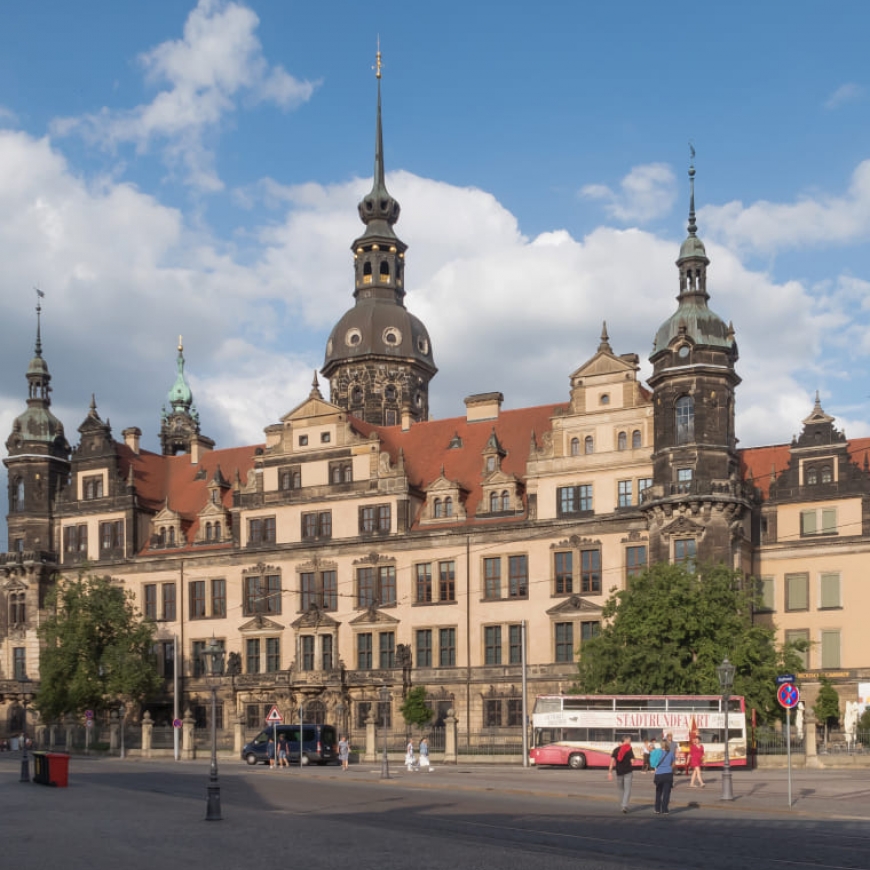Dresden

Dresden is the capital of Saxony, Germany, and the second most populous city after Leipzig. It ranks as the twelfth most populous city in Germany and the fourth largest by area, following Berlin, Hamburg, and Cologne. In the former East German region, Dresden is the third most populous city after Berlin and Leipzig. The metropolitan area of Dresden is home to about 1.34 million people.
Situated on the Elbe River, Dresden is the second largest city on this river after Hamburg. Most of the population lives in the Elbe Valley, while many areas west of the Elbe are in the Ore Mountains' forests and river valleys, including Weischelitz and Rockwitzbach. The city's name, along with many of its districts and rivers, has Sorbian origins.
Dresden is a relatively young city that developed from Slavic villages after the Germans took control, but the area has been inhabited since the Neolithic era by tribes with a linear pottery culture around 7500 BC. Today, Dresden is a large city with diverse autonomous regions, each having its own structure and appearance. Many areas still have old rural centers, and some neighborhoods have been almost completely preserved as rural settlements.
Dresden is situated on both banks of the Elbe River, mainly in the Dresden Basin. It is surrounded by the Ore Mountains to the east and south, the steep slopes of the Lusatian granite crust to the north, and the Elbe Sandstone Mountains to the east. The city is at an altitude of about 113 meters (371 ft), with the highest point being Triebenberg at 384 meters (1,260 ft). Dresden's convenient location and mild climate, along with its Baroque architecture and numerous world-famous museums, have earned it the nickname "Elbflorenz" (Florence on the Elbe).
Dresden boasts a rich history as the capital city and grand home to Saxony's Electors and Kings. For hundreds of years, the rulers filled the city with cultural and artistic treasures. Dresden was even the royal seat of Polish kings for a time, thanks to a special family connection. The city earned the nickname "The Jewel Box" for its stunning Baroque and Rococo architecture.
The modern Dresden is a dynamic city with a promising future. Since the reunification of Germany in 1990, the city has regained its status as a cultural, educational, and political hub. In 2019, the Hamburg Institute of International Economics (HWWI) and Berenberg Bank ranked Dresden 7th among German cities with the best future prospects. Dresden is one of Germany's most visited cities, with 4.7 million overnight stays annually.
Dresden is one of the greenest cities in Europe, with 62% of its area covered by green spaces and forests. The Dresden Heath (Dresdner Heide) is a forest in the north of the city, covering an area of 50 km² (19 square miles). The Elbe Valley in Dresden was once a World Heritage Site, aiming to preserve the city's cultural landscape. A key feature of this landscape is the Elbe meadows, which stretch through the city in a 20-kilometer strip of greenery. Additionally, a national park of Saxon Switzerland is located to the southeast of the city.
Dresden is a major transportation center in eastern Germany. The city has two big train stations, an international airport, and a harbor on the Elbe River. Major highways connect Dresden to all cardinal directions. Also it sits at the crossroads of two important European routes.